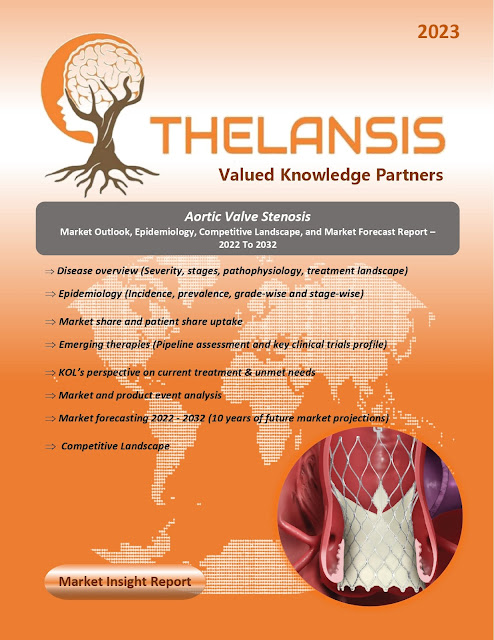Aortic Valve Stenosis – Market Outlook, Epidemiology, Competitive Landscape, and Market Forecast Report – 2022 To 2032
Aortic valve stenosis is the most common type of valvular heart disease, characterized by narrowing the aortic valve orifice between the aorta and left ventricle. The classic triad of symptoms associated with aortic stenosis includes angina pectoris, dyspnea, and syncope, but any clinical features of left-sided heart failure may also be present. In adults, degenerative calcification is the most common cause of aortic stenosis, often associated with the congenital bicuspid aortic valve, a chronic deterioration of the valve leaflets, or prior rheumatic heart disease affecting the aortic valve. It is classified based on its severity as mild, moderate, severe, or critical. Typically, this condition arises from congenital disabilities, including a narrow aortic valve, a bicuspid aortic valve, fused valve leaflets, or unusually thick valve leaflets that hinder complete opening. Complications of aortic valve stenosis include congestive heart failure, sudden cardiac death due to arrhythmia, calcified cerebral embolism, aortic valve regurgitation, and Heyde syndrome.
·
Aortic valve stenosis is a common acquired
heart valve disease, affecting approximately 2% of individuals over 60 years
old in the United States.
Thelansis’s “Aortic Valve Stenosis
Market Outlook, Epidemiology, Competitive Landscape, and Market Forecast Report
– 2021 To 2032" covers disease overview, epidemiology, drug utilization,
prescription share analysis, competitive landscape, clinical practice,
regulatory landscape, patient share, market uptake, market forecast, and key
market insights under the potential Aortic Valve Stenosis treatment modalities
options for eight major markets (USA, Germany, France, Italy, Spain, UK, Japan,
and China).
KOLs insights
of Aortic Valve Stenosis across 8 MM market from the centre of Excellence/
Public/ Private hospitals participated in the study. Insights around current
treatment landscape, epidemiology, clinical characteristics, future treatment
paradigm, and Unmet needs.
Aortic Valve Stenosis Market Forecast Patient
Based Forecast Model (MS. Excel Based Automated Dashboard), which Data Inputs
with sourcing, Market Event, and Product Event, Country specific Forecast
Model, Market uptake and patient share uptake, Attribute Analysis, Analog
Analysis, Disease burden, and pricing scenario, Summary, and Insights.
Thelansis Competitive Intelligence (CI) practice
has been established based on a deep understanding of the pharma/biotech
business environment to provide an optimized support system to all levels of
the decision-making process. It enables business leaders in forward-thinking
and proactive decision-making. Thelansis supports scientific and commercial
teams in seamless CI support by creating an AI/ ML-based technology-driven
platform that manages the data flow from primary and secondary sources.




Comments
Post a Comment